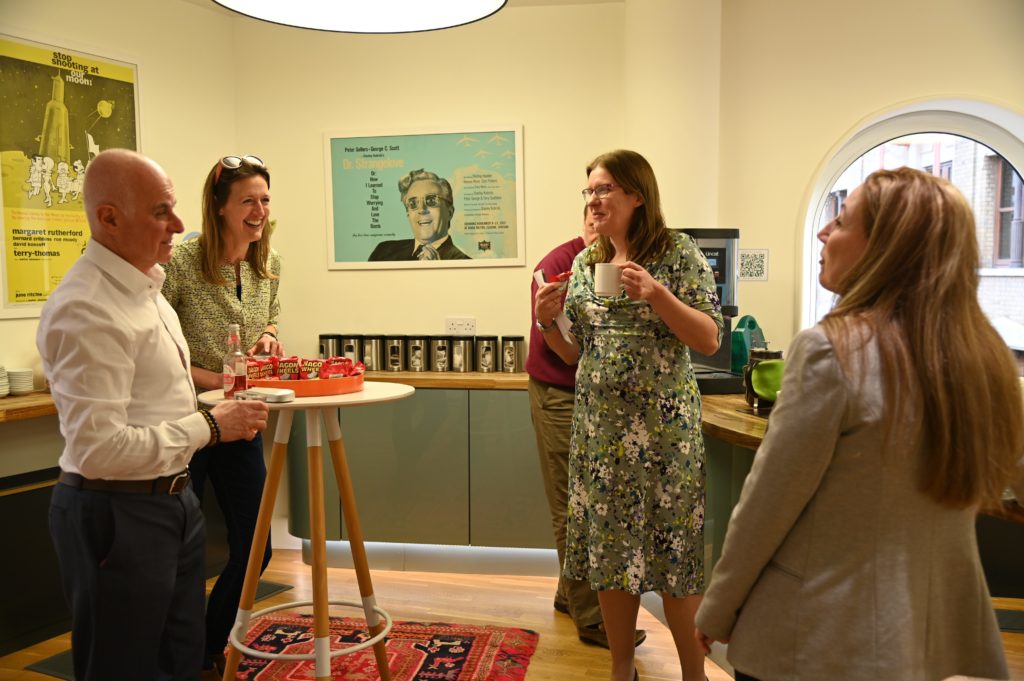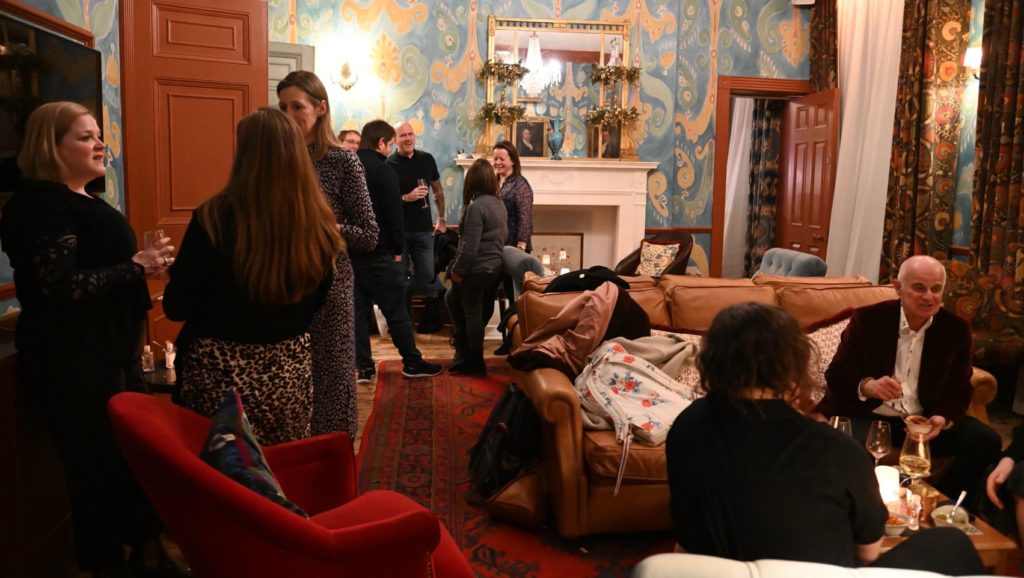How to create a workplace where people want to stay
DWG has enjoyed incredibly low people turnover for 20 years. Here are my 7 tips on how companies can learn from our experience, improve employee satisfaction and protect themselves against the ‘Great Resignation’

In a recent chat with Caroline Morecroft (a terrific member of the DWG compliance unit), she pointed out to me that “hardly anyone ever leaves DWG”.
That took me by surprise. I then realized it’s (mostly) true – and has been for the 20 years since we were founded in 2002. In fact, Caroline was observing something I’d been aware of but whose value I hadn’t fully understood.
DWG comprises more than 100 people, mainly across Europe and North America but with others in Australia and the Caribbean. We have an unusual team mix, combining employees and a flexible team of freelancers for project work. We have operated this hyper-flexible model since we began two decades ago.
Some of those freelancers work on short-term different projects, on and off, for many years. Hence, our levels of people churn are fractionally low.
Caroline’s observation reminded me of what Karlee Scott-Murphy, Viva and Employee Experience Leader at Microsoft and still mid-way in her career journey, said publicly at a DWG event last year. “My intention is to spend the rest of my career at Microsoft. Under Satya [Nadella] I find everything that matters to me so why would I ever leave?”
That’s the flip side of the exodus of talent we’re seeing in so many organizations of all sizes right now. If you can bring a number of key elements together and create the experience we seem to have at DWG (and that Karlee is enjoying at Microsoft) then why would anyone ever leave? Having great people stick together creates knowledge, strength, capability and community. It’s a gift that keeps on giving.
One caveat that concerns me is that having such stability in the team limits our ability to become a more diverse organization, which is a key objective for us. We are working on that challenge and I hope it can be solved naturally. But it remains an issue.
Often our clients will leave their organization and ask if they can come on board. This works well, as there’s an existing bond of trust and capability. So much so that a large percentage of DWG people are now former clients or members, to the point where I personally forget where we first met.
So what can the DWG experience teach us about how to have great people stay (forever it seems)? And what can other companies learn as they grapple with the Great Resignation, which one senior HR leader in a major US manufacturer told me this week “is real; it’s a thing and it’s happening”.
It’s odd but I notice I don’t have a lesson about us being hyper flexible, working without offices for 10 years now. Maybe that deserves to be on the list, but it’s so much a part of our culture it’s like the air we breathe. Maybe it’s an undeclared 8th lesson.
In my final year as CEO, before my now Deputy CEO Nancy Goebel takes over the CEO seat (and I become Creative Director), capturing these points is useful as I hope it ensures the value that got us here will carry us forward.
Here are my 7 lessons to combat the Great Resignation – based on why people rarely leave DWG.
1. Being nice matters
In a recent consulting project for a major healthcare company, as we laid out the next phases of work, the client team remarked on how polite and pleasant to work with our people were. In contrast, they said, to some larger consulting firms (who will remain nameless!).
This is not simply a set of clothes we wear when with a client. It is how we are with each other. For me that means treating everyone in the company, including all our suppliers, with respect. As a small example, we are a very punctual company, starting and ending all meetings on time. If a delay is unavoidable we will give people notice and reschedule flexibly.
Behaviour matters. We are firm with each other on what we feel is important to maintaining quality and brand. When lapses in common courtesy in our language and actions occur we apologize and resolve things quickly. In fact, such lapses are rare and new people quickly sense the vibe we have with each other, which I would call informal, professional and human.

Nice people, treated well, stay because they are happy. Simple but hopefully not simplistic.
2. Ensure robust entry assessments before people join
A steady stream of enquiries comes to us from people wanting to work for DWG. Fortunately, we are always growing (the pandemic has been a particular growth accelerator, with the digital workplace now seen as the essential workplace), so we have room for new faces and experiences. But given our low people turnover, we need to make sure all new recruits are a good fit for the business.
To ensure only those who will enjoy working here – and who meet our extremely high standards of expertise and talent – get through the vetting process, we have a carefully calibrated selection process. This includes a ‘ways of working’ check to ensure new people will work well within, and add to our team, as well testing expertise. Because our aim is to build a more diverse team, we do not look for a ‘type’. We also guard against recruiting on the basis of “X person knows Y and says they are great because they worked together at Z”.
We have a range of senior people who look at applicants through different lenses: culture, working patterns, experience, skills, commercial needs, etc. Recruitment tends to be rapid. As CEO I only meet new people after they have joined and we can have a more relaxed chat.
3. Exit people who don’t work well, fast
Caroline was mostly right but (as I said to her) sometimes we need to ask or tell people to leave because their work quality falls below our extremely high standards.
This only happens every few years. It is tough, as usually it involves someone who was great once but becomes not so great. Either their work quality deteriorates or they become disruptive to others in the team.
It’s a gradual process of realization, trying to help and then deciding that someone can no longer work for us. On rare occasions, someone will tell us they are leaving of their own volition. But we’re on guard for anyone who starts to believe they are indispensable. They aren’t. You aren’t. I’m not. It’s a dangerous, egotistical and flawed view. You are truly valued, but DWG will thrive without you.
Where new people fail to match our expectations – or we fail to meet theirs – we call it a day quickly. Decide, act, make it happen. There is a powerful message at the start of Good to Great, the seminal business book by Jim Collins, that says essentially “get the right people on the bus” and for me that has been vital. Hire well, treat people well and when it’s time for someone to leave, take the necessary action rapidly and decisively. You will never look back with regret.
4. You don’t have to pay the most in the industry, as it’s not just about pay
Everyone in DWG could earn more working at Accenture or Gartner. We know that. They know that. But they stay regardless, as we pay well enough for everyone to be happy.
As we transition to becoming an employee-owned organization, those on staff will gain ownership of a pretty highly-valued company. If we continue growing as we are, their stake will be worth considerably more down the line.
This has only been on the cards for the last 18 months, so it’s not why people joined or have stayed. It’s an unexpected gift, in effect. But setting that aside, we have had some people start with us and then get a hard-to-refuse money offer from a larger player in our industry, which they have taken. It’s interesting that once people adjust to working for DWG this seldom happens. I can only remember one instance in the last decade.
Our experience of work is our whole experience. If we are paid on time every month (as we always have been, suppliers included) then we judge the situation in the round. As contractors, our people may find themselves at a company that pays better but pays late, or unreliably. Or where the wider experience lacks the atmosphere and flexibility they get at DWG.

5. Happy people stay
Birthdays are celebrated. Partners having babies get flowers. Bereavements are acknowledged. Gifts are given. When people are struggling with childcare, elderly parents or life in general, we are there and do what we can to adapt and understand. Collectively we are in this together: we look and listen to make sure people are as happy as they can be. There might be types of work you’re good at but don’t enjoy. If so, let’s see how we can remedy the mismatch.

People at DWG work hard and well, and we promote a sense of happiness. At times of turbulence and distress – such as the pandemic and current events in Ukraine – work can be a steady, reliable and reassuring part of life. The world might be going mad but here at DWG life and work goes on. If you are happy where you are, why would you go anywhere else?
6. Stay fresh and varied in projects, clients and work
Karlee at Microsoft says she plans to stay at the company for her entire working life. Part of that is due to an expectation, I imagine, that they will keep her stimulated and alive. She is as bright as a button and needs challenges and variety, I am certain. And that’s the case with DWG also. We keep generating new ideas, approaches and clients so there are always new things in the mix. We are fortunate to be in the digital world of work, which is a dynamic and evolving area. But I have always tried to bring an entrepreneurial enthusiasm to DWG in terms of people, connections and ideas.
It keeps me fresh and engaged. And it ripples across DWG, so that no year is quite like the last. Do people get bored? I’m sure they must do. I had to write something yesterday that was time-consuming and tedious. But it was important to the business and gave me a sense of satisfaction afterwards.
7. Talk about feelings openly
What remains unexpressed harms us. When pressing concerns or life issues come up, the DWG team will talk about them, either in private one-to-one chats or more openly. It sounds like we’re a running a hippie sharing circle but that’s far from the case. It’s more that our people know their concerns about colleagues, projects, their personal health etc. can be talked about and resolved. There is no pressure to share: we understand that some people are more private than others.

There has been continual sharing of people’s fears and stress regarding the pandemic, politics and the climate emergency, as well as issues relating to DWG projects, ageing parents and children. When my brother-in-law died early in the pandemic I talked about him and how close we were on DWG forums. I cannot count the numbers of colleagues I have seen cry, or who have seen me cry. No one has collapsed. Work has continued. We all survived the tears.
Categorised in: Employee experience, Working at DWG
